126 papers:
 SIGMOD-2015-LiBCGM #named #network #towards
SIGMOD-2015-LiBCGM #named #network #towards- GetReal: Towards Realistic Selection of Influence Maximization Strategies in Competitive Networks (HL, SSB, JC, YG, JM), pp. 1525–1537.
 SIGMOD-2015-RablDFSJ #big data
SIGMOD-2015-RablDFSJ #big data- Just can’t get enough: Synthesizing Big Data (TR, MD, MF, SS, HAJ), pp. 1457–1462.
 SIGMOD-2015-XiaoBME #metadata #summary #using
SIGMOD-2015-XiaoBME #metadata #summary #using- Even Metadata is Getting Big: Annotation Summarization using InsightNotes (DX, AB, TM, MYE), pp. 1409–1414.
 VLDB-2015-KrishnanWFGK
VLDB-2015-KrishnanWFGK- Stale View Cleaning: Getting Fresh Answers from Stale Materialized Views (SK, JW, MJF, KG, TK), pp. 1370–1381.
 CHI-2015-GuerreiroRMGN0 #physics #tablet
CHI-2015-GuerreiroRMGN0 #physics #tablet- TabLETS Get Physical: Non-Visual Text Entry on Tablet Devices (JG, AR, KM, TJVG, HN, DG), pp. 39–42.
 DHM-EH-2015-CheffiRBBS #approach #cost analysis #feedback #optimisation
DHM-EH-2015-CheffiRBBS #approach #cost analysis #feedback #optimisation- A Bi-level Optimization Approach to Get an Optimal Combination of Cost Functions for Pilot’s Arm Movement: The Case of Helicopter’s Flying Aid Functions with Haptic Feedback (SC, TR, LB, PB, JCS), pp. 248–257.
 DUXU-IXD-2015-Moldenhauer #design #how #student
DUXU-IXD-2015-Moldenhauer #design #how #student- How Do I Get to Room 3106? — Student Wayfinding Designs for Old Main at Wayne State University (JAM), pp. 390–399.
 POPL-2015-EbadiSS #difference #privacy
POPL-2015-EbadiSS #difference #privacy- Differential Privacy: Now it’s Getting Personal (HE, DS, GS), pp. 69–81.
 ESEC-FSE-2015-HermannREM #java #towards
ESEC-FSE-2015-HermannREM #java #towards- Getting to know you: towards a capability model for Java (BH, MR, ME, MM), pp. 758–769.
 CGO-2015-ArthurMDA #control flow
CGO-2015-ArthurMDA #control flow- Getting in control of your control flow with control-data isolation (WA, BM, RD, TMA), pp. 79–90.
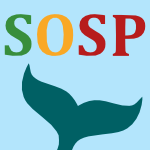 SOSP-2015-TsaiZRJZP #file system #how
SOSP-2015-TsaiZRJZP #file system #how- How to get more value from your file system directory cache (CcT, YZ, JR, YJ, TZ, DEP), pp. 441–456.
 ASE-2014-JinCQR #configuration management #named
ASE-2014-JinCQR #configuration management #named- PrefFinder: getting the right preference in configurable software systems (DJ, MBC, XQ, BR), pp. 151–162.
 VLDB-2014-ZhangJSR #big data #recommendation #using
VLDB-2014-ZhangJSR #big data #recommendation #using- Getting Your Big Data Priorities Straight: A Demonstration of Priority-based QoS using Social-network-driven Stock Recommendation (RZ, RJ, PS, LR), pp. 1665–1668.
 PLDI-2014-GreenmanMT #bound #morphism #polymorphism
PLDI-2014-GreenmanMT #bound #morphism #polymorphism- Getting F-bounded polymorphism into shape (BG, FM, RT), p. 12.
 CHI-2014-LeivaS #empirical #set
CHI-2014-LeivaS #empirical #set- Representatively memorable: sampling the right phrase set to get the text entry experiment right (LAL, GST), pp. 1709–1712.
 CSCW-2014-MitraG #people #predict
CSCW-2014-MitraG #people #predict- The language that gets people to give: phrases that predict success on kickstarter (TM, EG), pp. 49–61.
 HCI-AIMT-2014-MattarW #impact analysis
HCI-AIMT-2014-MattarW #impact analysis- Let’s Get Personal — Assessing the Impact of Personal Information in Human-Agent Conversations (NM, IW), pp. 450–461.
 HCI-AS-2014-Hussain #data mining #mining
HCI-AS-2014-Hussain #data mining #mining- Getting the Most from CRM Systems: Data Mining in SugarCRM, Finding Important Patterns (QH), pp. 693–699.
 Onward-2014-Murphy #development
Onward-2014-Murphy #development- Getting to Flow in Software Development (GCM), pp. 269–281.
 Onward-2014-ProustM #invariant
Onward-2014-ProustM #invariant- It’s Only Illegal If You Get Caught: Breaking Invariants and Getting Away with It (RP, AM), pp. 163–171.
 FSE-2014-Chandra
FSE-2014-Chandra- Are you getting traction? tales from the tech transfer trenches (invited talk) (SC), p. 5.
 FSE-2014-SeoK #how #testing
FSE-2014-SeoK #how #testing- How we get there: a context-guided search strategy in concolic testing (HS, SK), pp. 413–424.
 SLE-2014-SloaneRH #how
SLE-2014-SloaneRH #how- Respect Your Parents: How Attribution and Rewriting Can Get Along (AMS, MR, LGCH), pp. 191–210.
 VLDB-2013-Ngo
VLDB-2013-Ngo- Getting Unique Solution in Data Exchange (NN), pp. 1440–1443.
 MSR-2013-NadiDTHL #how #linux #question #variability #what
MSR-2013-NadiDTHL #how #linux #question #variability #what- Linux variability anomalies: what causes them and how do they get fixed? (SN, CD, RT, RCH, DL), pp. 111–120.
 CHI-2013-SettlesD #online
CHI-2013-SettlesD #online- Let’s get together: the formation and success of online creative collaborations (BS, SD), pp. 2009–2018.
 CSCW-2013-LiaoS #community #microblog
CSCW-2013-LiaoS #community #microblog- She gets a sports car from our donation: rumor transmission in a Chinese microblogging community (QL, LS), pp. 587–598.
 HCI-AS-2013-Sampanthar #question
HCI-AS-2013-Sampanthar #question- The Motivational GPS: Would a Rat Press a Lever to Get a Badge? (KS), pp. 292–298.
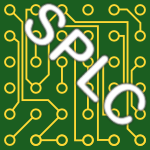 SPLC-2013-ClementsRY
SPLC-2013-ClementsRY- Barriers for SPL practice and paths to get over them (PCC, JR, KY), p. 289.
 ICSM-2012-ThungLJLRD #debugging #question
ICSM-2012-ThungLJLRD #debugging #question- When would this bug get reported? (FT, DL, LJ, L, FR, PTD), pp. 420–429.
 SCAM-2012-Xie #analysis #testing
SCAM-2012-Xie #analysis #testing- Cooperative Testing and Analysis: Human-Tool, Tool-Tool and Human-Human Cooperations to Get Work Done (TX), pp. 1–3.
 CHI-2012-DuganGMVJLCDB #enterprise #exclamation #quote
CHI-2012-DuganGMVJLCDB #enterprise #exclamation #quote- “I’d never get out of this !?$%# office”: redesigning time management for the enterprise (CD, WG, MJM, ANV, KJ, SL, LTC, EMD, BB), pp. 1755–1764.
 CHI-2012-Jamison-PowellLDGL #quote #twitter
CHI-2012-Jamison-PowellLDGL #quote #twitter- “I can’t get no sleep”: discussing #insomnia on twitter (SJP, CL, LD, AG, SWL), pp. 1501–1510.
 KDD-2012-ShiA #dataset #mobile #recommendation
KDD-2012-ShiA #dataset #mobile #recommendation- GetJar mobile application recommendations with very sparse datasets (KS, KA), pp. 204–212.
 RE-2012-GrossD #exclamation #requirements #specification #what
RE-2012-GrossD #exclamation #requirements #specification #what- What you need is what you get!: The vision of view-based requirements specifications (AG, JD), pp. 171–180.
 ICSE-2012-ZimmermannNGM #debugging #predict
ICSE-2012-ZimmermannNGM #debugging #predict- Characterizing and predicting which bugs get reopened (TZ, NN, PJG, BM), pp. 1074–1083.
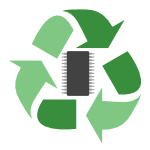 ISMM-2012-ShahriyarBF
ISMM-2012-ShahriyarBF- Down for the count? Getting reference counting back in the ring (RS, SMB, DF), pp. 73–84.
 PODS-2011-CohenK #using
PODS-2011-CohenK #using- Get the most out of your sample: optimal unbiased estimators using partial information (EC, HK), pp. 13–24.
 CSEET-2011-Roach #experience #re-engineering #student
CSEET-2011-Roach #experience #re-engineering #student- Retrospectives in a software engineering project course: Getting students to get the most from a project experience (SR), pp. 467–471.
 ITiCSE-2011-KaratsolisCHCOAS #communication #effectiveness
ITiCSE-2011-KaratsolisCHCOAS #communication #effectiveness- Getting CS undergraduates to communicate effectively (AK, IC, KAH, YC, KO, NBAG, TS), pp. 283–287.
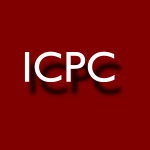 ICPC-2011-Burnett #programming #question #tool support
ICPC-2011-Burnett #programming #question #tool support- Males and Females Developing Software: Are Programming Tools Getting in the Way? (MB), p. xvii.
 DUXU-v2-2011-Zeller #design #what
DUXU-v2-2011-Zeller #design #what- What You See Is What You Don’t Get: Addressing Implications of Information Technology through Design Fiction (LZ), pp. 329–336.
 ICEIS-v3-2011-MansarWS #collaboration #design #distributed #exclamation #student
ICEIS-v3-2011-MansarWS #collaboration #design #distributed #exclamation #student- Getting to Global Yes! — Designing a Distributed Student Collaboration (SLM, RW, BGKS), pp. 229–234.
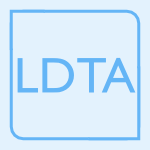 LDTA-2011-PlasmeijerLAM #coordination
LDTA-2011-PlasmeijerLAM #coordination- Getting a grip on tasks that coordinate tasks (RP, BL, PA, SM), p. 1.
 CAV-2011-AtigBP #analysis
CAV-2011-AtigBP #analysis- Getting Rid of Store-Buffers in TSO Analysis (MFA, AB, GP), pp. 99–115.
 CHI-2010-BaoGGH #named #topic
CHI-2010-BaoGGH #named #topic- Momentum: getting and staying on topic during a brainstorm (PB, EG, DG, DH), pp. 1233–1236.
 CHI-2010-OzencKZOM #design #how
CHI-2010-OzencKZOM #design #how- How to support designers in getting hold of the immaterial material of software (FKO, MK, JZ, SO, BAM), pp. 2513–2522.
 SIGIR-2010-AhmedN #multi #people #question
SIGIR-2010-AhmedN #multi #people #question- multi Searcher: can we support people to get information from text they can’t read or understand? (FA, AN), pp. 837–838.
 RE-2010-MahauxHM #requirements
RE-2010-MahauxHM #requirements- Making It all Up: Getting in on the Act to Improvise Creative Requirements (MM, PH, NAMM), pp. 375–376.
 ICSE-2010-GuoZNM #debugging #empirical #predict
ICSE-2010-GuoZNM #debugging #empirical #predict- Characterizing and predicting which bugs get fixed: an empirical study of Microsoft Windows (PJG, TZ, NN, BM), pp. 495–504.
 DAC-2009-YingKKGGOTW #how #question
DAC-2009-YingKKGGOTW #how #question- Guess, solder, measure, repeat: how do I get my mixed-signal chip right? (GY, AK, KSK, GGEG, EG, MO, ST, WW), pp. 520–521.
 DocEng-2009-ZubiagaMF #classification #social #web
DocEng-2009-ZubiagaMF #classification #social #web- Getting the most out of social annotations for web page classification (AZ, RM, VF), pp. 74–83.
 CHI-2009-Cockton #design #interactive
CHI-2009-Cockton #design #interactive- Getting there: six meta-principles and interaction design (GC), pp. 2223–2232.
 CHI-2009-HerringCKB #comprehension #design #exclamation #how #why
CHI-2009-HerringCKB #comprehension #design #exclamation #how #why- Getting inspired!: understanding how and why examples are used in creative design practice (SRH, CCC, JK, BPB), pp. 87–96.
 CHI-2009-HilligesK #design
CHI-2009-HilligesK #design- Getting sidetracked: display design and occasioning photo-talk with the photohelix (OH, DSK), pp. 1733–1736.
 CHI-2009-PirolliWS #wiki
CHI-2009-PirolliWS #wiki- So you know you’re getting the best possible information: a tool that increases Wikipedia credibility (PP, EW, BS), pp. 1505–1508.
 HCI-NIMT-2009-GastBRRWMR #analysis #gesture #human-computer #interactive
HCI-NIMT-2009-GastBRRWMR #analysis #gesture #human-computer #interactive- Did I Get It Right: Head Gestures Analysis for Human-Machine Interactions (JG, AB, TR, GR, FW, CM, BR), pp. 170–177.
 RecSys-2009-AbbassiALVY #recommendation
RecSys-2009-AbbassiALVY #recommendation- Getting recommender systems to think outside the box (ZA, SAY, LVSL, SV, CY), pp. 285–288.
 OOPSLA-2009-InoueN #hardware #how #java #monitoring #performance #virtual machine
OOPSLA-2009-InoueN #hardware #how #java #monitoring #performance #virtual machine- How a Java VM can get more from a hardware performance monitor (HI, TN), pp. 137–154.
 DAC-2008-MattsonW #parallel #programming #question
DAC-2008-MattsonW #parallel #programming #question- Parallel programming: can we PLEASE get it right this time? (TM, MW), pp. 7–11.
 CSEET-2008-Epstein #agile #how #process #student
CSEET-2008-Epstein #agile #how #process #student- Getting Students to Think About How Agile Processes can be Made More Secure (RGE), pp. 51–58.
 MSR-2008-WeissgerberND #exclamation
MSR-2008-WeissgerberND #exclamation- Small patches get in! (PW, DN, SD), pp. 67–76.
 FM-2008-ArvindDK #design #verification
FM-2008-ArvindDK #design #verification- Getting Formal Verification into Design Flow (A, ND, MK), pp. 12–32.
 ICEIS-SAIC-2008-DranilPHS #concept #exclamation #integration #web #web service
ICEIS-SAIC-2008-DranilPHS #concept #exclamation #integration #web #web service- Get Ready for Mashability! Concepts for Web 2.0 Service Integration (PD, TP, TH, MS), pp. 160–167.
 KDD-2008-ShengPI #data mining #mining #multi #quality #using
KDD-2008-ShengPI #data mining #mining #multi #quality #using- Get another label? improving data quality and data mining using multiple, noisy labelers (VSS, FJP, PGI), pp. 614–622.
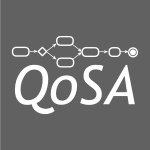 QoSA-2007-BoerFLVCJ #architecture
QoSA-2007-BoerFLVCJ #architecture- Architectural Knowledge: Getting to the Core (RCdB, RF, PL, HvV, VC, AJ), pp. 197–214.
 DAC-2007-Levitan #graph #random
DAC-2007-Levitan #graph #random- You Can Get There From Here: Connectivity of Random Graphs on Grids (SPL), pp. 272–273.
 ITiCSE-2007-McCartneyEMSZ #student
ITiCSE-2007-McCartneyEMSZ #student- Successful students’ strategies for getting unstuck (RM, AE, JEM, KS, CZ), pp. 156–160.
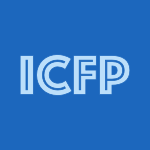 ICFP-2007-Herman #functional #how
ICFP-2007-Herman #functional #how- Functional pearl: the great escape or, how to jump the border without getting caught (DH), pp. 157–164.
 CHI-2007-RivadeneiraGMM #evaluation #in the cloud #towards
CHI-2007-RivadeneiraGMM #evaluation #in the cloud #towards- Getting our head in the clouds: toward evaluation studies of tagclouds (AWR, DMG, MJM, DRM), pp. 995–998.
 HCI-IPT-2007-ZamanV #design #exclamation #process
HCI-IPT-2007-ZamanV #design #exclamation #process- Getting Lost? Touch and You Will Find! The User-Centered Design Process of a Touch Screen (BZ, RV), pp. 197–206.
 EDOC-2007-MendlingDA #modelling #process
EDOC-2007-MendlingDA #modelling #process- Getting Rid of the OR-Join in Business Process Models (JM, BFvD, WMPvdA), pp. 3–14.
 ITiCSE-2006-Bibby #exclamation #feedback
ITiCSE-2006-Bibby #exclamation #feedback- Getting feedback: no pressure! (PB), p. 346.
 PLDI-2006-LauAHC #online #optimisation #performance #using
PLDI-2006-LauAHC #online #optimisation #performance #using- Online performance auditing: using hot optimizations without getting burned (JL, MA, MH, BC), pp. 239–251.
 CHI-2006-HorneckerB #framework #interactive #physics #social
CHI-2006-HorneckerB #framework #interactive #physics #social- Getting a grip on tangible interaction: a framework on physical space and social interaction (EH, JB), pp. 437–446.
 CHI-2006-TohidiBBS #design
CHI-2006-TohidiBBS #design- Getting the right design and the design right (MT, WB, RB, AS), pp. 1243–1252.
 SIGIR-2006-LiKVJ #query #transaction #web
SIGIR-2006-LiKVJ #query #transaction #web- Getting work done on the web: supporting transactional queries (YL, RK, SV, HVJ), pp. 557–564.
 DAC-2005-AminMKDCHI #analysis #how #question #statistics
DAC-2005-AminMKDCHI #analysis #how #question #statistics- Statistical static timing analysis: how simple can we get? (CSA, NM, KK, FD, UC, NH, YII), pp. 652–657.
 VLDB-2005-HallB #database #linux
VLDB-2005-HallB #database #linux- Getting Priorities Straight: Improving Linux Support for Database I/O (CH, PB), pp. 1116–1127.
 CHI-2005-PatilL #configuration management #privacy #what
CHI-2005-PatilL #configuration management #privacy #what- Who gets to know what when: configuring privacy permissions in an awareness application (SP, JL), pp. 101–110.
 RE-2005-SvetinovicBG #analysis #concept #identification #object-oriented #student #why
RE-2005-SvetinovicBG #analysis #concept #identification #object-oriented #student #why- Concept Identification in Object-Oriented Domain Analysis: Why Some Students Just Don’t Get It (DS, DMB, MWG), pp. 189–198.
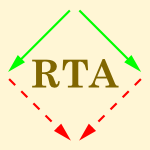 RTA-2005-Comon-LundhD #algebra #finite #how
RTA-2005-Comon-LundhD #algebra #finite #how- The Finite Variant Property: How to Get Rid of Some Algebraic Properties (HCL, SD), pp. 294–307.
 ITiCSE-2004-BenayaZ #question #student
ITiCSE-2004-BenayaZ #question #student- Can students improve their undergraduate schievements and get accepted to graduate school? (TB, EZ), p. 246.
 TOOLS-USA-2003-ArnoutB04 #eiffel #how
TOOLS-USA-2003-ArnoutB04 #eiffel #how- How to get a Singleton in Eiffel (KA, EB), pp. 75–95.
 ICSE-2004-HarmanW #re-engineering #search-based
ICSE-2004-HarmanW #re-engineering #search-based- Getting Results from Search-Based Approaches to Software Engineering (MH, JW), pp. 728–729.
 PODS-2003-FaginKP
PODS-2003-FaginKP- Data exchange: getting to the core (RF, PGK, LP), pp. 90–101.
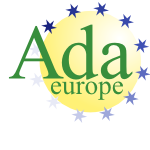 AdaEurope-2003-MinguetGFL #metric #using
AdaEurope-2003-MinguetGFL #metric #using- Getting System Metrics Using POSIX Tracing Services (AEM, VLG, AGF, ACiL), pp. 220–231.
 DAC-2002-DillJRBFFRSW #verification
DAC-2002-DillJRBFFRSW #verification- Formal verification methods: getting around the brick wall (DLD, NJ, SR, GB, LF, HF, RKR, GS, CW), pp. 576–577.
 DAC-2002-HazelhurstWKF #approach #design #hybrid #verification
DAC-2002-HazelhurstWKF #approach #design #hybrid #verification- A hybrid verification approach: getting deep into the design (SH, OW, GK, LF), pp. 111–116.
 SIGMOD-2002-GarofalakisGR #data type #mining #query #tutorial
SIGMOD-2002-GarofalakisGR #data type #mining #query #tutorial- Querying and mining data streams: you only get one look a tutorial (MNG, JG, RR), p. 635.
 VLDB-2002-GarofalakisG #data type #mining #query
VLDB-2002-GarofalakisG #data type #mining #query- Querying and Mining Data Streams: You Only Get One Look (MNG, JG).
 PLDI-2002-BlackburnJMM #garbage collection #named
PLDI-2002-BlackburnJMM #garbage collection #named- Beltway: Getting Around Garbage Collection Gridlock (SB, REJ, KSM, JEBM), pp. 153–164.
 CIKM-2002-Zemankova #information management #question #research
CIKM-2002-Zemankova #information management #question #research- Knowledge and information management: Is it possible to do interesting and important research, get funded, be useful and appreciated? (MZ), pp. 373–374.
 HPDC-2002-RambadtW #named
HPDC-2002-RambadtW #named- UNICORE — Globus Interoperability: Getting the Best of Both Worlds (MR, PW), p. 422.
 CSMR-2000-JohnstoneSW #assembly #challenge #compilation #control flow #what
CSMR-2000-JohnstoneSW #assembly #challenge #compilation #control flow #what- What Assembly Language Programmers Get Up To: Control Flow Challenges in Reverse Compilation (AJ, ES, TW), pp. 83–92.
 PLDI-2000-GhemawatRS #analysis #interprocedural #low cost
PLDI-2000-GhemawatRS #analysis #interprocedural #low cost- Field analysis: getting useful and low-cost interprocedural information (SG, KHR, DJS), pp. 334–344.
 ICEIS-2000-GeneroPCS #database #metric #quality
ICEIS-2000-GeneroPCS #database #metric #quality- Measures to Get Better Quality Databases (MG, MP, CC, MAS), pp. 49–55.
 ICSE-2000-OsterweilBEGKM #re-engineering #research #why
ICSE-2000-OsterweilBEGKM #re-engineering #research #why- Why don’t we get more (self?) respect: the positive impact of software engineering research upon practice (LJO, BWB, ME, VG, JK, EFM), p. 660.
 ICSE-2000-Rifkin #diagrams #precedence
ICSE-2000-Rifkin #diagrams #precedence- When the project absolutely must get done: marrying the organization chart with the precedence diagram (SR), pp. 588–596.
 CHI-1999-McDanielM
CHI-1999-McDanielM- Getting More Cut of Programming-by-Demonstration (RGM, BAM), pp. 442–449.
 HCI-CCAD-1999-NisslerMH #3d #classification #design #how
HCI-CCAD-1999-NisslerMH #3d #classification #design #how- How to get the right outfit for my agent? Classification — and design methodology for a virtual shopping assistant in a 3D world (JN, JM, AH), pp. 162–166.
 TOOLS-EUROPE-1999-Figer #roadmap
TOOLS-EUROPE-1999-Figer #roadmap- Trends in Technology — Getting Ready for the 21st Century (JPF), p. 5.
 SIGMOD-1998-LacroixSC #exclamation #web #what
SIGMOD-1998-LacroixSC #exclamation #web #what- User-oriented smart-cache for the Web: What You Seek is What You Get! (ZL, AS, RC), pp. 572–574.
 ITiCSE-1998-Kolikant #algebra #how #student
ITiCSE-1998-Kolikant #algebra #how #student- “How much did you get?” (poster): the influence of algebraic knowledge of computer science students (YBDK), p. 287.
 ICFP-1998-Haiming #context-free grammar #recursion
ICFP-1998-Haiming #context-free grammar #recursion- Combining CFG and Recursive Functions to Get a New Language (HC), p. 351.
 ICML-1998-FriedmanGL #classification #network #parametricity
ICML-1998-FriedmanGL #classification #network #parametricity- Bayesian Network Classification with Continuous Attributes: Getting the Best of Both Discretization and Parametric Fitting (NF, MG, TJL), pp. 179–187.
 HPDC-1998-GianniniC #architecture #clustering #communication #performance
HPDC-1998-GianniniC #architecture #clustering #communication #performance- A Software Architecture for Global Address Space Communication on Clusters: Put/Get on Fast Messages (LAG, AAC), pp. 330–337.
 CHI-1997-MoranPHCKMMZ #case study #ll #multi #quote
CHI-1997-MoranPHCKMMZ #case study #ll #multi #quote- “I’ll Get That Off the Audio”: A Case Study of Salvaging Multimedia Meeting Records (TPM, LP, SRH, PC, DK, SLM, WvM, PZ), pp. 202–209.
 HCI-SEC-1997-MurraySKK #feedback
HCI-SEC-1997-MurraySKK #feedback- Getting a Grip: Touch Feedback with Binary Stimulators (AMM, KBS, RLK, PKK), pp. 913–916.
 FME-1996-Hoare #how #proving #question #reliability
FME-1996-Hoare #how #proving #question #reliability- How Did Software Get So Reliable Without Proof? (CARH), pp. 1–17.
 CSCW-1996-PycockB #design #industrial
CSCW-1996-PycockB #design #industrial- Getting Others to get it Right: an Ethnography of Design Work in the Fashion Industry (JP, JB), pp. 219–228.
 ICSE-1996-Hoare #how #proving #reliability
ICSE-1996-Hoare #how #proving #reliability- The Role of Formal Techniques: Past, Current and Future or How Did Software Get so Reliable without Proof? (Extended Abstract) (CARH), pp. 233–234.
 ICML-1994-KoppelSF
ICML-1994-KoppelSF- Getting the Most from Flawed Theories (MK, AMS, RF), pp. 139–147.
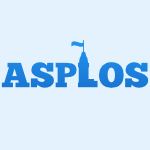 ASPLOS-1994-HayashiDHKSISIS #architecture #compilation #interface
ASPLOS-1994-HayashiDHKSISIS #architecture #compilation #interface- AP1000+: Architectural Support of PUT/GET Interface for Parallelizing Compiler (KH, TD, TH, YK, OS, NI, TS, HI, TS), pp. 196–207.
 INTERCHI-1993-ODayJ #how
INTERCHI-1993-ODayJ #how- Orienteering in an information landscape: how information seekers get from here to there (VLO, RJ), pp. 438–445.
 KR-1992-BaaderHNPF #analysis #empirical #optimisation #representation
KR-1992-BaaderHNPF #analysis #empirical #optimisation #representation- An Empirical Analysis of Optimization Techniques for Terminological Representation Systems, or Making KRIS Get a Move On (FB, BH, BN, HJP, EF), pp. 270–281.
 TOOLS-USA-1992-Weber #correctness #how
TOOLS-USA-1992-Weber #correctness #how- Getting Class Correctness and System Correctness Equivalent (How to get covariance right) (FW), pp. 199–213.
 OOPSLA-1991-Snyder #how
OOPSLA-1991-Snyder #how- How to Get Your Paper Accepted at OOPSLA (AS), pp. 359–363.
 TOOLS-USA-1991-Walling #named
TOOLS-USA-1991-Walling #named- Keynote: Getting Started (KW), p. 6.
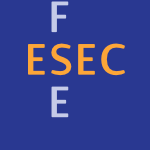 ESEC-1991-Feather #requirements
ESEC-1991-Feather #requirements- Requirements Engineering — Getting Right from Wrong (MSF), pp. 485–488.
 CHI-1990-Jacob #eye tracking #interactive #what
CHI-1990-Jacob #eye tracking #interactive #what- What you look at is what you get: eye movement-based interaction techniques (RJKJ), pp. 11–18.
 ICSE-1990-Bush90a #case study #experience #metric #quality
ICSE-1990-Bush90a #case study #experience #metric #quality- Getting Started on Metrics — JPL Productivity and Quality (Experience Report) (MWB), pp. 133–142.
 VLDB-1983-VassiliouCJ #how
VLDB-1983-VassiliouCJ #how- How Does an Expert System Get its Data? (Extended Abstract) (YV, JC, MJ), pp. 70–72.
 DAC-1980-Armstrong #what
DAC-1980-Armstrong #what- A CAD user’s perspective what gets done right wrong and not at all (Position Paper) (RAA), p. 517.
 ICALP-1980-Ainhirn #how #pseudo
ICALP-1980-Ainhirn #how #pseudo- How to Get Rid of Pseudoterminals (WA), pp. 1–11.
 CADE-1980-Noll #how
CADE-1980-Noll #how- A Note on Resolution: How to Get Rid of Factoring without Loosing Completeness (HN), pp. 250–263.
 SIGMOD-2015-LiBCGM #named #network #towards
SIGMOD-2015-LiBCGM #named #network #towards SIGMOD-2015-RablDFSJ #big data
SIGMOD-2015-RablDFSJ #big data SIGMOD-2015-XiaoBME #metadata #summary #using
SIGMOD-2015-XiaoBME #metadata #summary #using VLDB-2015-KrishnanWFGK
VLDB-2015-KrishnanWFGK CHI-2015-GuerreiroRMGN0 #physics #tablet
CHI-2015-GuerreiroRMGN0 #physics #tablet DHM-EH-2015-CheffiRBBS #approach #cost analysis #feedback #optimisation
DHM-EH-2015-CheffiRBBS #approach #cost analysis #feedback #optimisation DUXU-IXD-2015-Moldenhauer #design #how #student
DUXU-IXD-2015-Moldenhauer #design #how #student POPL-2015-EbadiSS #difference #privacy
POPL-2015-EbadiSS #difference #privacy ESEC-FSE-2015-HermannREM #java #towards
ESEC-FSE-2015-HermannREM #java #towards CGO-2015-ArthurMDA #control flow
CGO-2015-ArthurMDA #control flow SOSP-2015-TsaiZRJZP #file system #how
SOSP-2015-TsaiZRJZP #file system #how ASE-2014-JinCQR #configuration management #named
ASE-2014-JinCQR #configuration management #named VLDB-2014-ZhangJSR #big data #recommendation #using
VLDB-2014-ZhangJSR #big data #recommendation #using PLDI-2014-GreenmanMT #bound #morphism #polymorphism
PLDI-2014-GreenmanMT #bound #morphism #polymorphism CHI-2014-LeivaS #empirical #set
CHI-2014-LeivaS #empirical #set CSCW-2014-MitraG #people #predict
CSCW-2014-MitraG #people #predict HCI-AIMT-2014-MattarW #impact analysis
HCI-AIMT-2014-MattarW #impact analysis HCI-AS-2014-Hussain #data mining #mining
HCI-AS-2014-Hussain #data mining #mining Onward-2014-Murphy #development
Onward-2014-Murphy #development Onward-2014-ProustM #invariant
Onward-2014-ProustM #invariant FSE-2014-Chandra
FSE-2014-Chandra FSE-2014-SeoK #how #testing
FSE-2014-SeoK #how #testing SLE-2014-SloaneRH #how
SLE-2014-SloaneRH #how VLDB-2013-Ngo
VLDB-2013-Ngo MSR-2013-NadiDTHL #how #linux #question #variability #what
MSR-2013-NadiDTHL #how #linux #question #variability #what CHI-2013-SettlesD #online
CHI-2013-SettlesD #online CSCW-2013-LiaoS #community #microblog
CSCW-2013-LiaoS #community #microblog HCI-AS-2013-Sampanthar #question
HCI-AS-2013-Sampanthar #question SPLC-2013-ClementsRY
SPLC-2013-ClementsRY ICSM-2012-ThungLJLRD #debugging #question
ICSM-2012-ThungLJLRD #debugging #question SCAM-2012-Xie #analysis #testing
SCAM-2012-Xie #analysis #testing CHI-2012-DuganGMVJLCDB #enterprise #exclamation #quote
CHI-2012-DuganGMVJLCDB #enterprise #exclamation #quote CHI-2012-Jamison-PowellLDGL #quote #twitter
CHI-2012-Jamison-PowellLDGL #quote #twitter KDD-2012-ShiA #dataset #mobile #recommendation
KDD-2012-ShiA #dataset #mobile #recommendation RE-2012-GrossD #exclamation #requirements #specification #what
RE-2012-GrossD #exclamation #requirements #specification #what ICSE-2012-ZimmermannNGM #debugging #predict
ICSE-2012-ZimmermannNGM #debugging #predict ISMM-2012-ShahriyarBF
ISMM-2012-ShahriyarBF PODS-2011-CohenK #using
PODS-2011-CohenK #using CSEET-2011-Roach #experience #re-engineering #student
CSEET-2011-Roach #experience #re-engineering #student ITiCSE-2011-KaratsolisCHCOAS #communication #effectiveness
ITiCSE-2011-KaratsolisCHCOAS #communication #effectiveness ICPC-2011-Burnett #programming #question #tool support
ICPC-2011-Burnett #programming #question #tool support DUXU-v2-2011-Zeller #design #what
DUXU-v2-2011-Zeller #design #what ICEIS-v3-2011-MansarWS #collaboration #design #distributed #exclamation #student
ICEIS-v3-2011-MansarWS #collaboration #design #distributed #exclamation #student LDTA-2011-PlasmeijerLAM #coordination
LDTA-2011-PlasmeijerLAM #coordination CAV-2011-AtigBP #analysis
CAV-2011-AtigBP #analysis CHI-2010-BaoGGH #named #topic
CHI-2010-BaoGGH #named #topic CHI-2010-OzencKZOM #design #how
CHI-2010-OzencKZOM #design #how SIGIR-2010-AhmedN #multi #people #question
SIGIR-2010-AhmedN #multi #people #question RE-2010-MahauxHM #requirements
RE-2010-MahauxHM #requirements ICSE-2010-GuoZNM #debugging #empirical #predict
ICSE-2010-GuoZNM #debugging #empirical #predict DAC-2009-YingKKGGOTW #how #question
DAC-2009-YingKKGGOTW #how #question DocEng-2009-ZubiagaMF #classification #social #web
DocEng-2009-ZubiagaMF #classification #social #web CHI-2009-Cockton #design #interactive
CHI-2009-Cockton #design #interactive CHI-2009-HerringCKB #comprehension #design #exclamation #how #why
CHI-2009-HerringCKB #comprehension #design #exclamation #how #why CHI-2009-HilligesK #design
CHI-2009-HilligesK #design CHI-2009-PirolliWS #wiki
CHI-2009-PirolliWS #wiki HCI-NIMT-2009-GastBRRWMR #analysis #gesture #human-computer #interactive
HCI-NIMT-2009-GastBRRWMR #analysis #gesture #human-computer #interactive RecSys-2009-AbbassiALVY #recommendation
RecSys-2009-AbbassiALVY #recommendation OOPSLA-2009-InoueN #hardware #how #java #monitoring #performance #virtual machine
OOPSLA-2009-InoueN #hardware #how #java #monitoring #performance #virtual machine DAC-2008-MattsonW #parallel #programming #question
DAC-2008-MattsonW #parallel #programming #question CSEET-2008-Epstein #agile #how #process #student
CSEET-2008-Epstein #agile #how #process #student MSR-2008-WeissgerberND #exclamation
MSR-2008-WeissgerberND #exclamation FM-2008-ArvindDK #design #verification
FM-2008-ArvindDK #design #verification ICEIS-SAIC-2008-DranilPHS #concept #exclamation #integration #web #web service
ICEIS-SAIC-2008-DranilPHS #concept #exclamation #integration #web #web service KDD-2008-ShengPI #data mining #mining #multi #quality #using
KDD-2008-ShengPI #data mining #mining #multi #quality #using QoSA-2007-BoerFLVCJ #architecture
QoSA-2007-BoerFLVCJ #architecture DAC-2007-Levitan #graph #random
DAC-2007-Levitan #graph #random ITiCSE-2007-McCartneyEMSZ #student
ITiCSE-2007-McCartneyEMSZ #student ICFP-2007-Herman #functional #how
ICFP-2007-Herman #functional #how CHI-2007-RivadeneiraGMM #evaluation #in the cloud #towards
CHI-2007-RivadeneiraGMM #evaluation #in the cloud #towards HCI-IPT-2007-ZamanV #design #exclamation #process
HCI-IPT-2007-ZamanV #design #exclamation #process EDOC-2007-MendlingDA #modelling #process
EDOC-2007-MendlingDA #modelling #process ITiCSE-2006-Bibby #exclamation #feedback
ITiCSE-2006-Bibby #exclamation #feedback PLDI-2006-LauAHC #online #optimisation #performance #using
PLDI-2006-LauAHC #online #optimisation #performance #using CHI-2006-HorneckerB #framework #interactive #physics #social
CHI-2006-HorneckerB #framework #interactive #physics #social CHI-2006-TohidiBBS #design
CHI-2006-TohidiBBS #design SIGIR-2006-LiKVJ #query #transaction #web
SIGIR-2006-LiKVJ #query #transaction #web DAC-2005-AminMKDCHI #analysis #how #question #statistics
DAC-2005-AminMKDCHI #analysis #how #question #statistics VLDB-2005-HallB #database #linux
VLDB-2005-HallB #database #linux CHI-2005-PatilL #configuration management #privacy #what
CHI-2005-PatilL #configuration management #privacy #what RE-2005-SvetinovicBG #analysis #concept #identification #object-oriented #student #why
RE-2005-SvetinovicBG #analysis #concept #identification #object-oriented #student #why RTA-2005-Comon-LundhD #algebra #finite #how
RTA-2005-Comon-LundhD #algebra #finite #how ITiCSE-2004-BenayaZ #question #student
ITiCSE-2004-BenayaZ #question #student TOOLS-USA-2003-ArnoutB04 #eiffel #how
TOOLS-USA-2003-ArnoutB04 #eiffel #how ICSE-2004-HarmanW #re-engineering #search-based
ICSE-2004-HarmanW #re-engineering #search-based PODS-2003-FaginKP
PODS-2003-FaginKP AdaEurope-2003-MinguetGFL #metric #using
AdaEurope-2003-MinguetGFL #metric #using DAC-2002-DillJRBFFRSW #verification
DAC-2002-DillJRBFFRSW #verification DAC-2002-HazelhurstWKF #approach #design #hybrid #verification
DAC-2002-HazelhurstWKF #approach #design #hybrid #verification SIGMOD-2002-GarofalakisGR #data type #mining #query #tutorial
SIGMOD-2002-GarofalakisGR #data type #mining #query #tutorial VLDB-2002-GarofalakisG #data type #mining #query
VLDB-2002-GarofalakisG #data type #mining #query PLDI-2002-BlackburnJMM #garbage collection #named
PLDI-2002-BlackburnJMM #garbage collection #named CIKM-2002-Zemankova #information management #question #research
CIKM-2002-Zemankova #information management #question #research HPDC-2002-RambadtW #named
HPDC-2002-RambadtW #named CSMR-2000-JohnstoneSW #assembly #challenge #compilation #control flow #what
CSMR-2000-JohnstoneSW #assembly #challenge #compilation #control flow #what PLDI-2000-GhemawatRS #analysis #interprocedural #low cost
PLDI-2000-GhemawatRS #analysis #interprocedural #low cost ICEIS-2000-GeneroPCS #database #metric #quality
ICEIS-2000-GeneroPCS #database #metric #quality ICSE-2000-OsterweilBEGKM #re-engineering #research #why
ICSE-2000-OsterweilBEGKM #re-engineering #research #why ICSE-2000-Rifkin #diagrams #precedence
ICSE-2000-Rifkin #diagrams #precedence CHI-1999-McDanielM
CHI-1999-McDanielM HCI-CCAD-1999-NisslerMH #3d #classification #design #how
HCI-CCAD-1999-NisslerMH #3d #classification #design #how TOOLS-EUROPE-1999-Figer #roadmap
TOOLS-EUROPE-1999-Figer #roadmap SIGMOD-1998-LacroixSC #exclamation #web #what
SIGMOD-1998-LacroixSC #exclamation #web #what ITiCSE-1998-Kolikant #algebra #how #student
ITiCSE-1998-Kolikant #algebra #how #student ICFP-1998-Haiming #context-free grammar #recursion
ICFP-1998-Haiming #context-free grammar #recursion ICML-1998-FriedmanGL #classification #network #parametricity
ICML-1998-FriedmanGL #classification #network #parametricity HPDC-1998-GianniniC #architecture #clustering #communication #performance
HPDC-1998-GianniniC #architecture #clustering #communication #performance CHI-1997-MoranPHCKMMZ #case study #ll #multi #quote
CHI-1997-MoranPHCKMMZ #case study #ll #multi #quote HCI-SEC-1997-MurraySKK #feedback
HCI-SEC-1997-MurraySKK #feedback FME-1996-Hoare #how #proving #question #reliability
FME-1996-Hoare #how #proving #question #reliability CSCW-1996-PycockB #design #industrial
CSCW-1996-PycockB #design #industrial ICSE-1996-Hoare #how #proving #reliability
ICSE-1996-Hoare #how #proving #reliability ICML-1994-KoppelSF
ICML-1994-KoppelSF ASPLOS-1994-HayashiDHKSISIS #architecture #compilation #interface
ASPLOS-1994-HayashiDHKSISIS #architecture #compilation #interface INTERCHI-1993-ODayJ #how
INTERCHI-1993-ODayJ #how KR-1992-BaaderHNPF #analysis #empirical #optimisation #representation
KR-1992-BaaderHNPF #analysis #empirical #optimisation #representation TOOLS-USA-1992-Weber #correctness #how
TOOLS-USA-1992-Weber #correctness #how OOPSLA-1991-Snyder #how
OOPSLA-1991-Snyder #how TOOLS-USA-1991-Walling #named
TOOLS-USA-1991-Walling #named ESEC-1991-Feather #requirements
ESEC-1991-Feather #requirements CHI-1990-Jacob #eye tracking #interactive #what
CHI-1990-Jacob #eye tracking #interactive #what ICSE-1990-Bush90a #case study #experience #metric #quality
ICSE-1990-Bush90a #case study #experience #metric #quality VLDB-1983-VassiliouCJ #how
VLDB-1983-VassiliouCJ #how DAC-1980-Armstrong #what
DAC-1980-Armstrong #what ICALP-1980-Ainhirn #how #pseudo
ICALP-1980-Ainhirn #how #pseudo CADE-1980-Noll #how
CADE-1980-Noll #how









